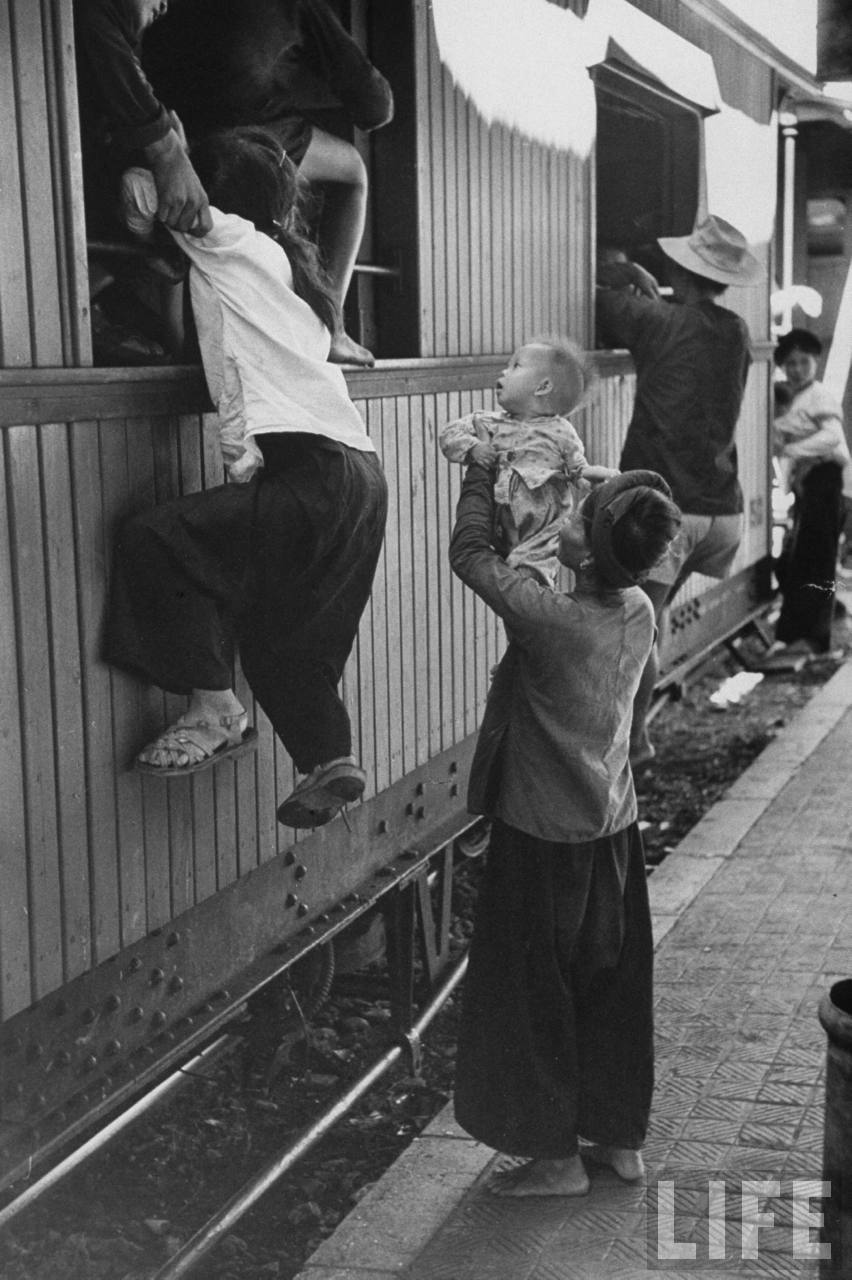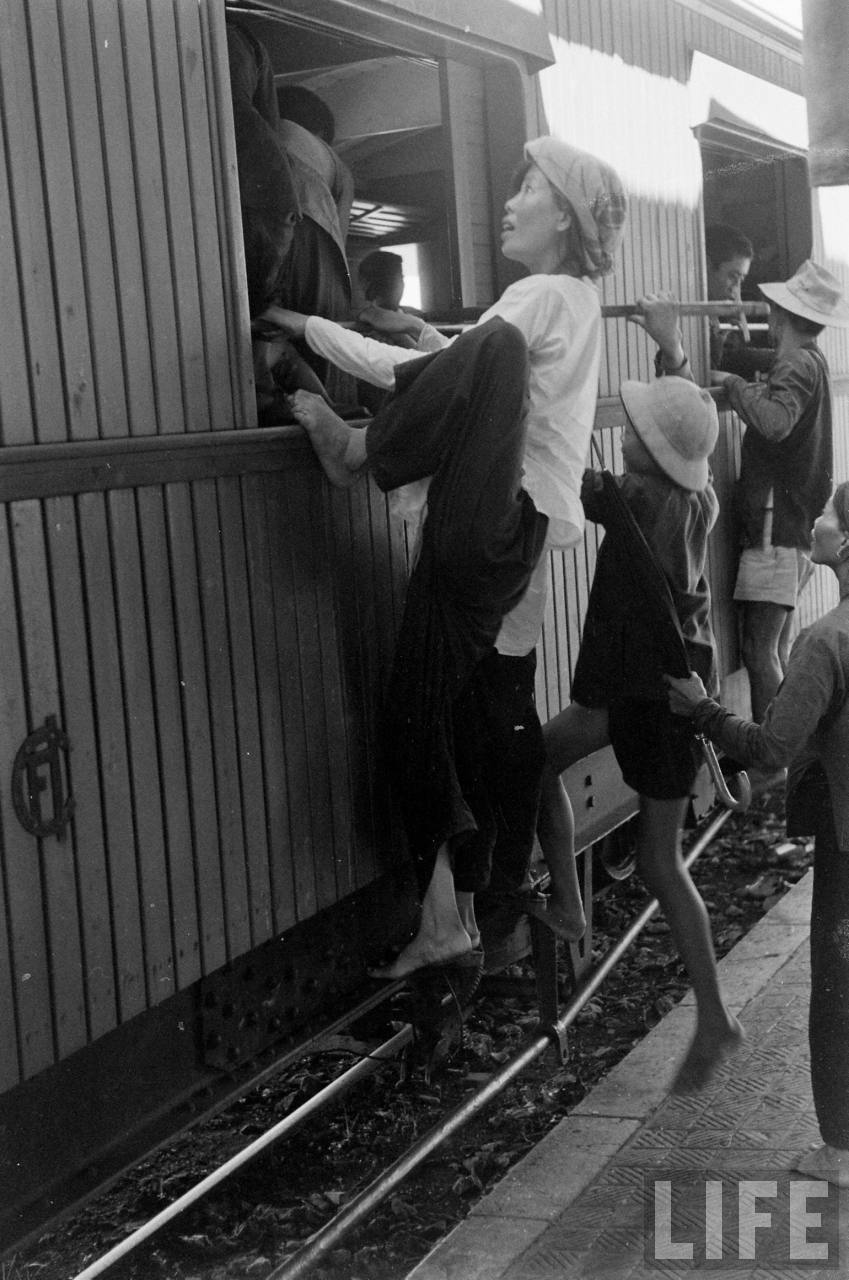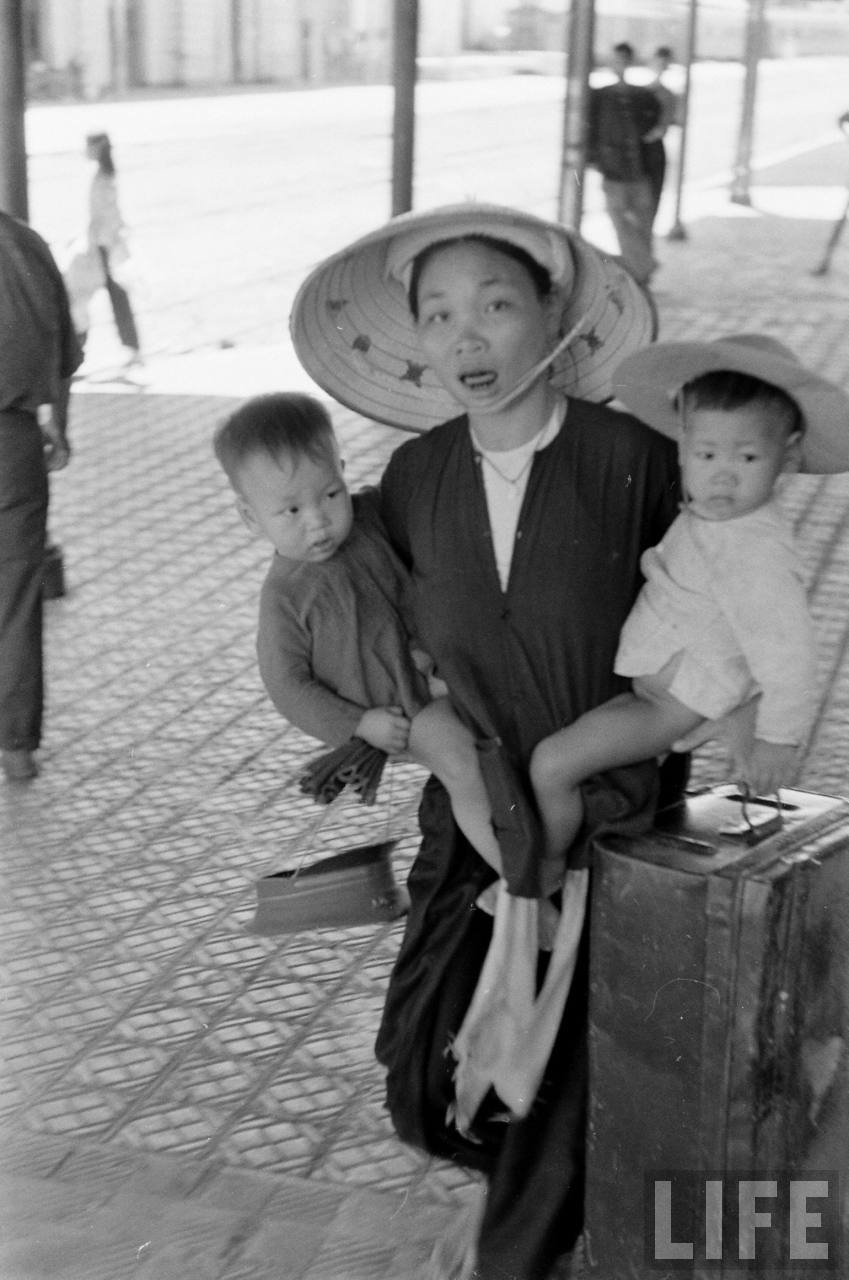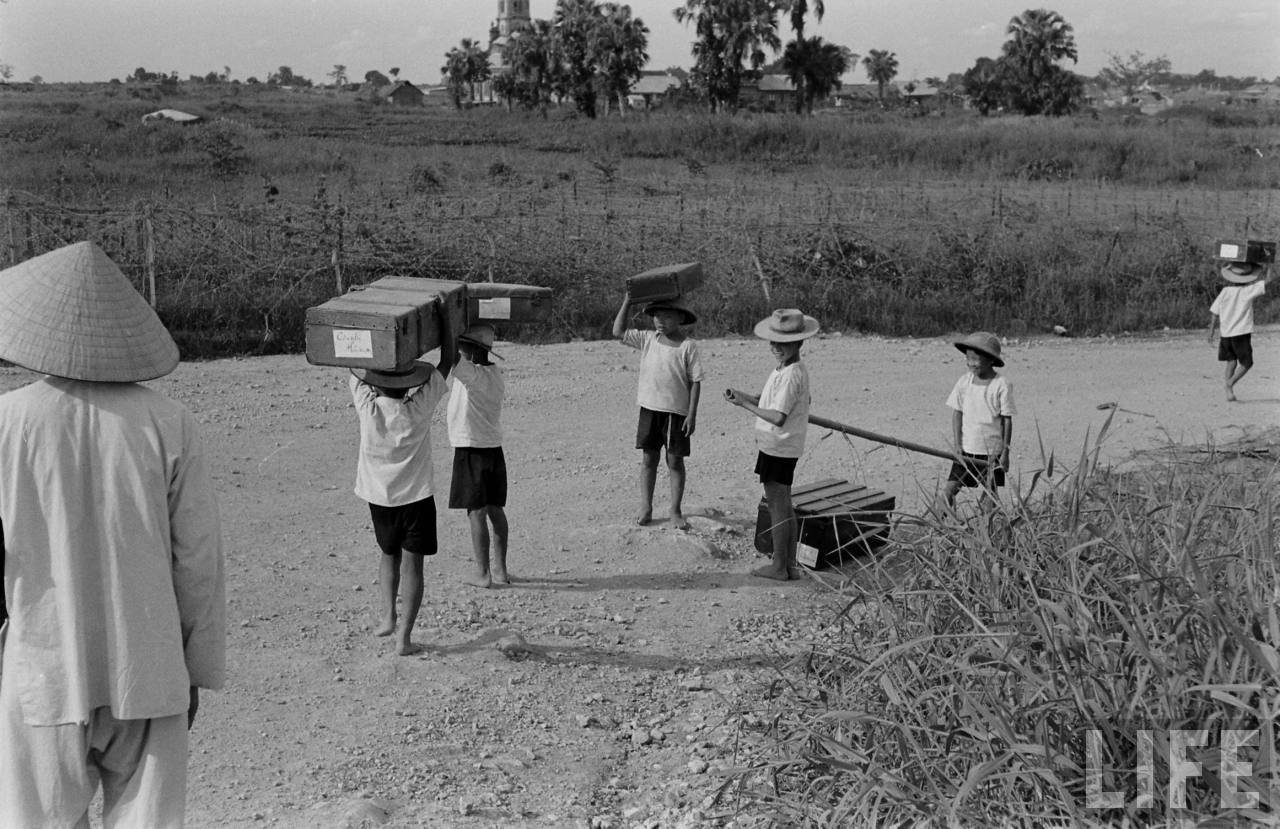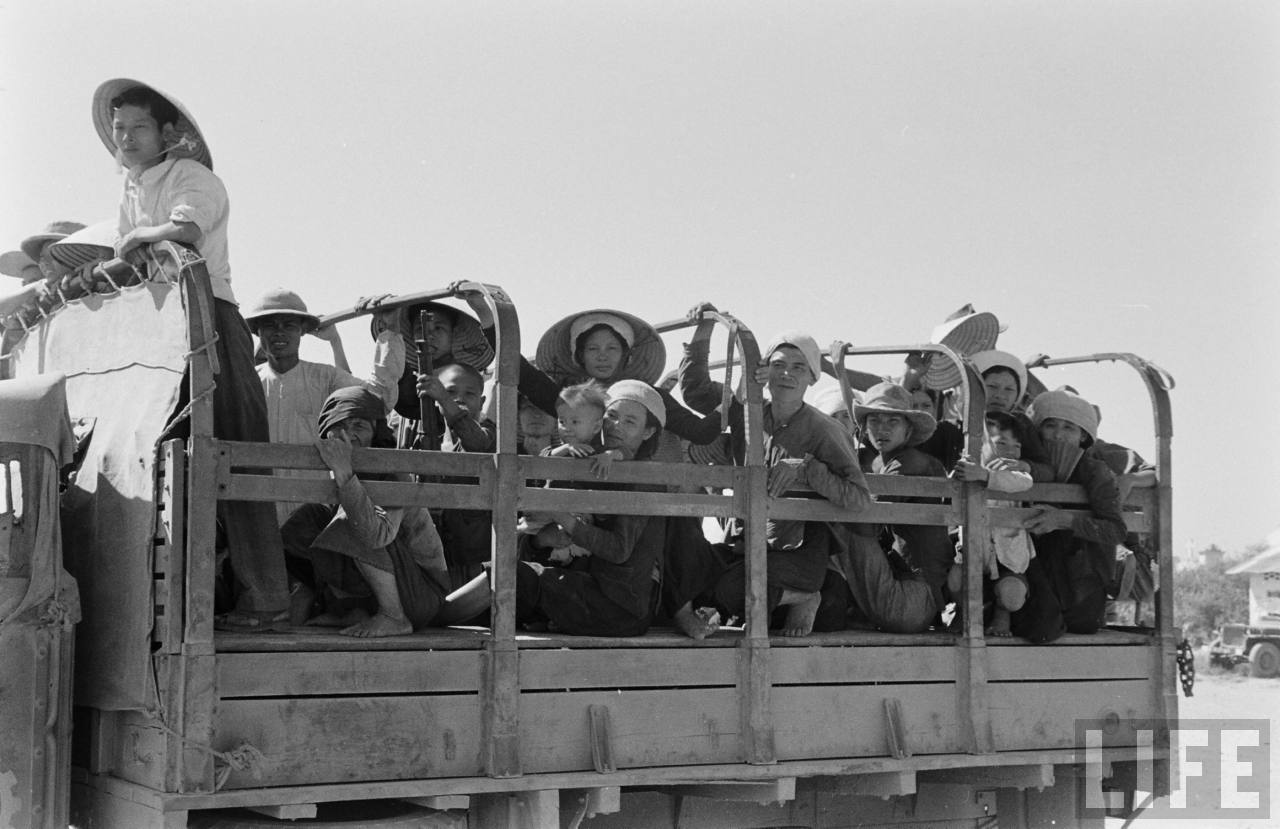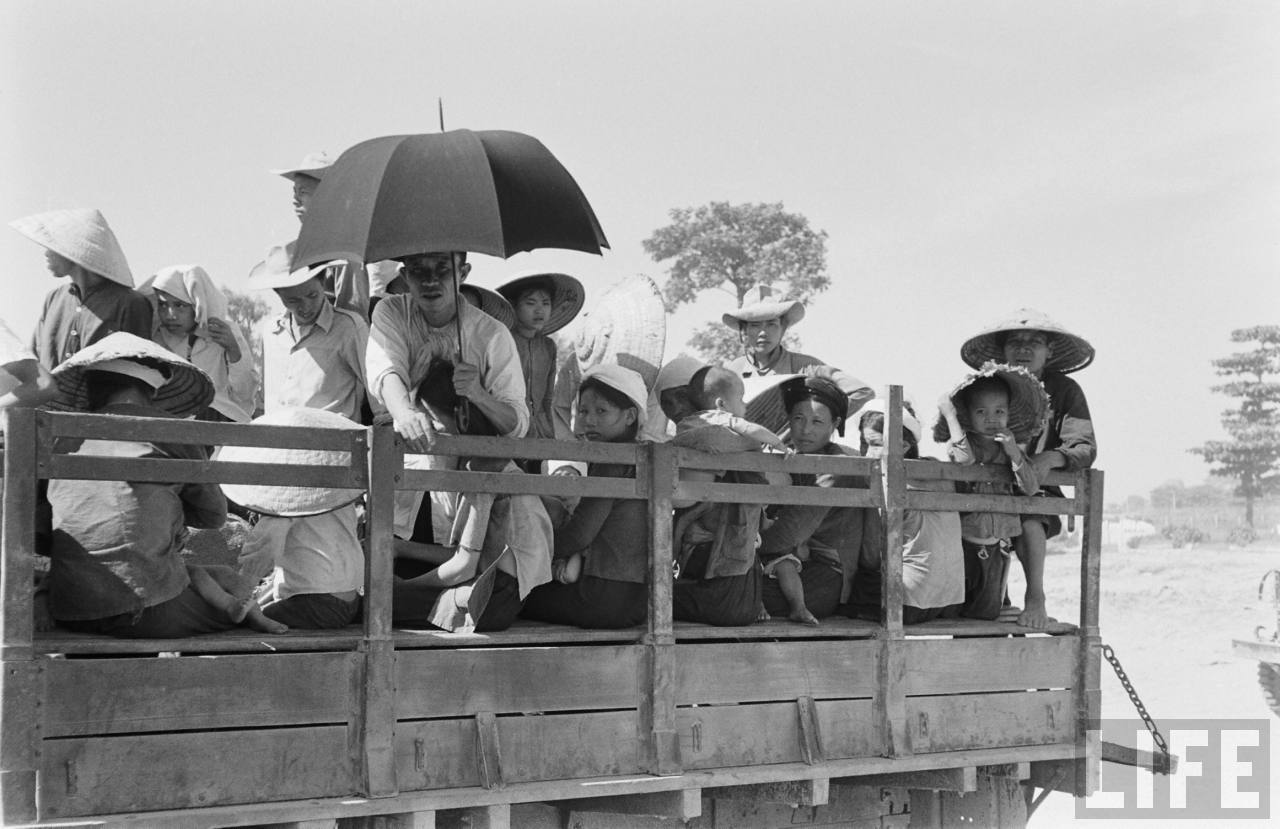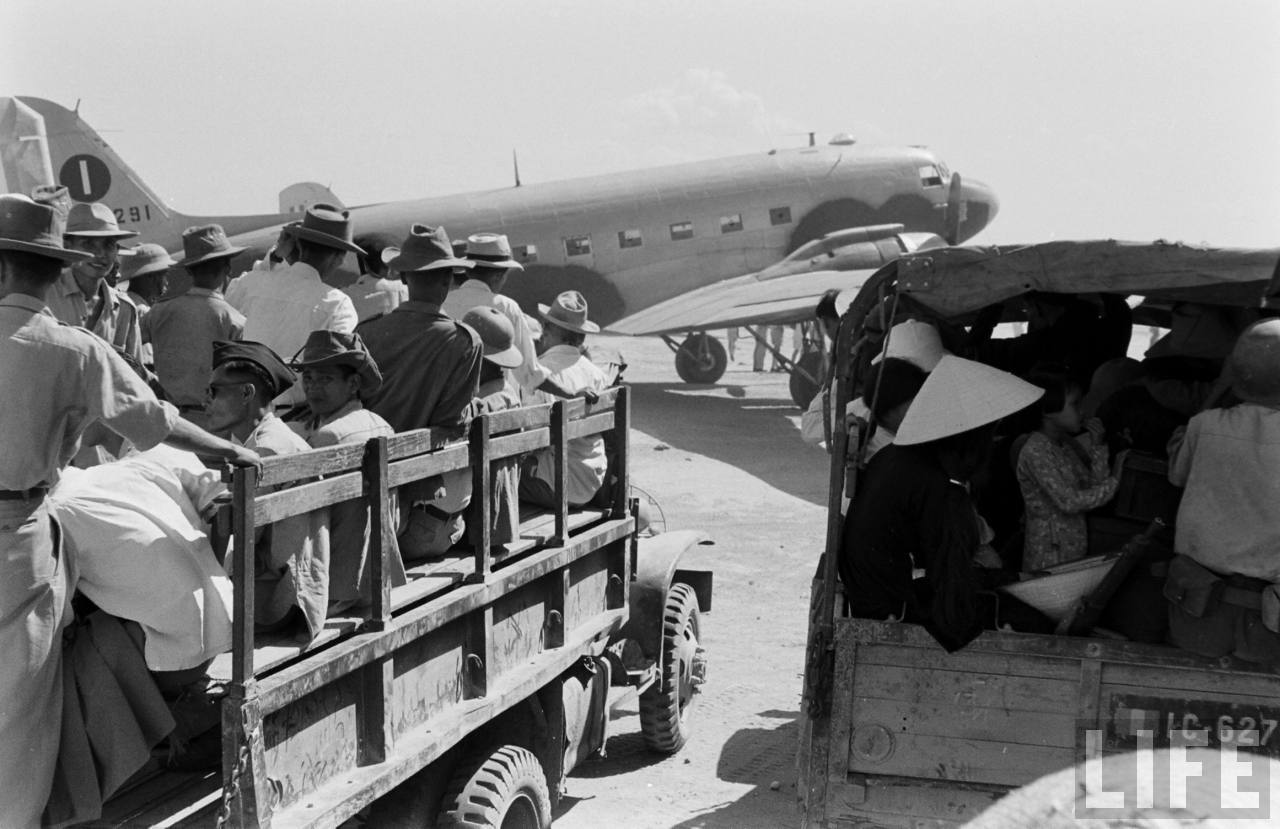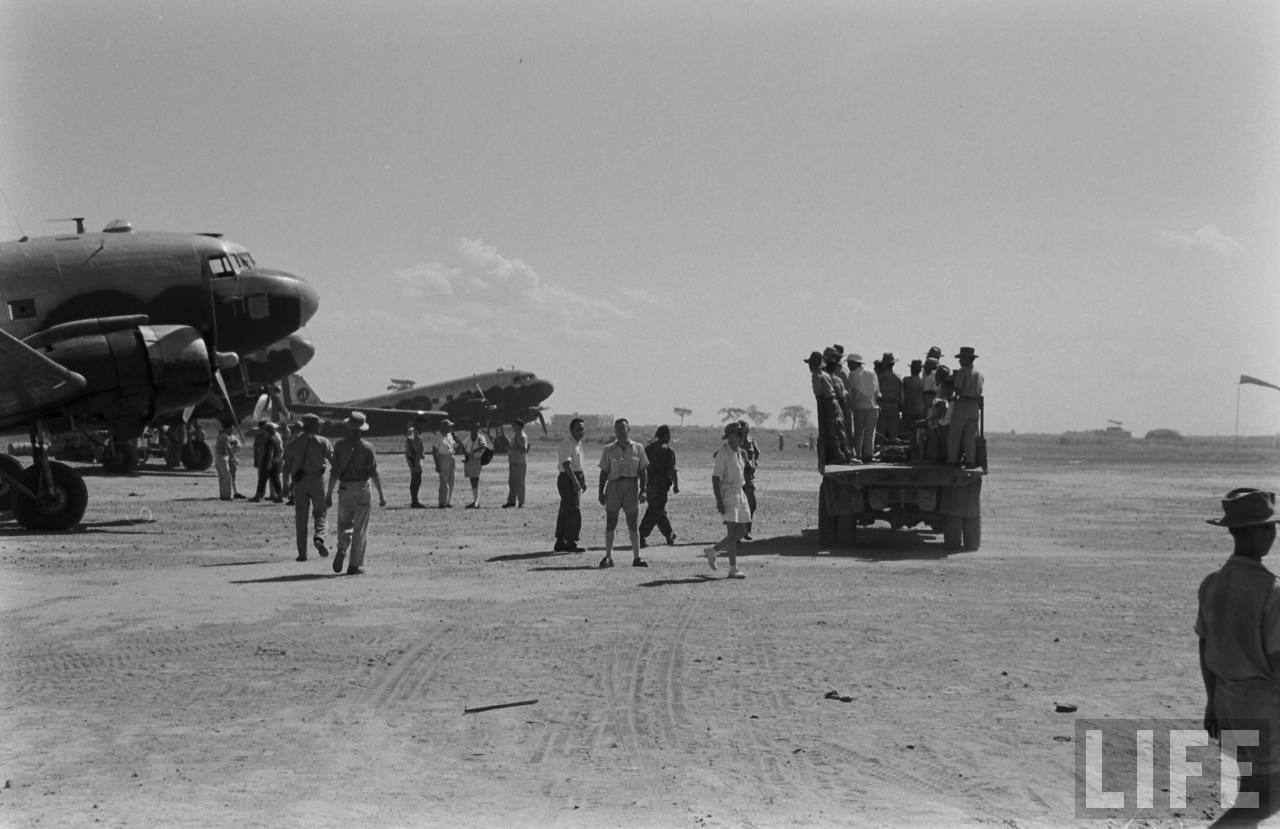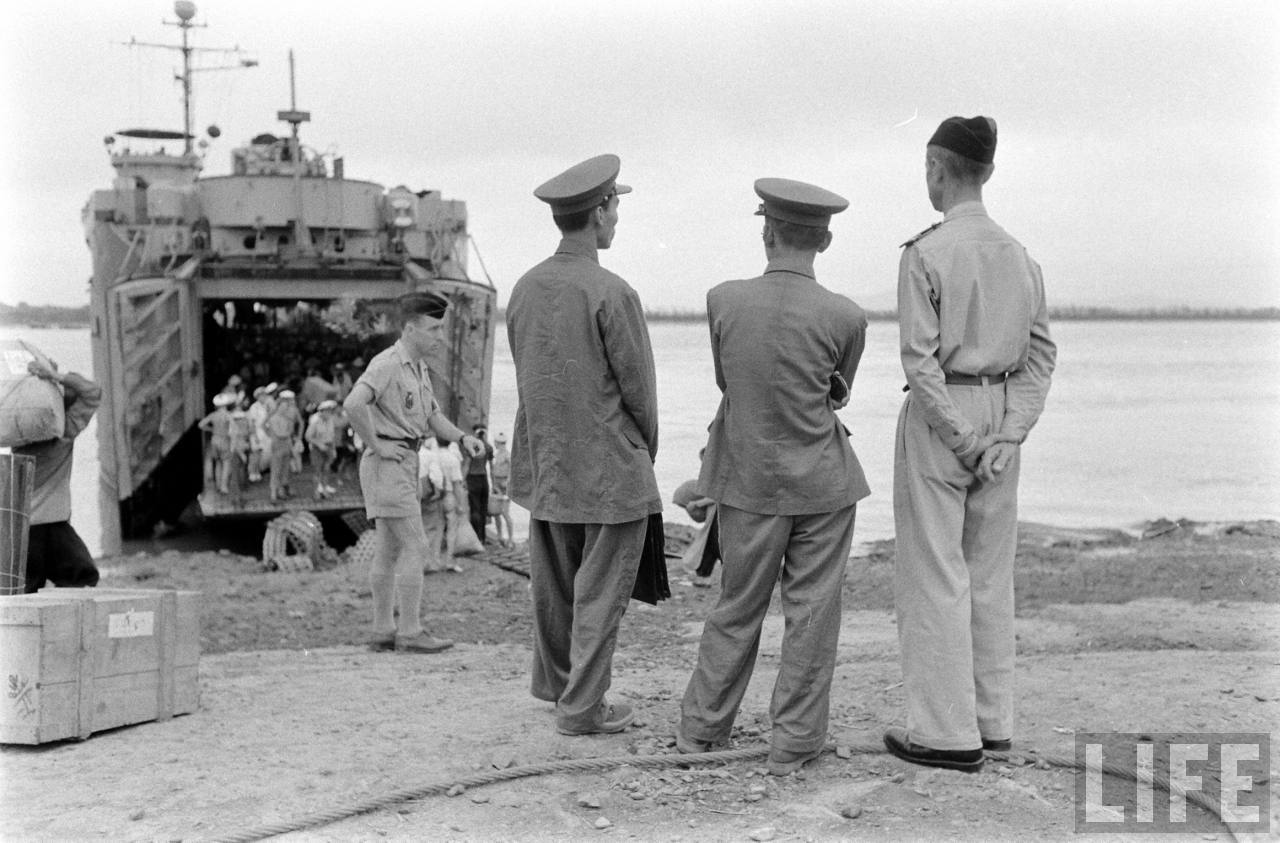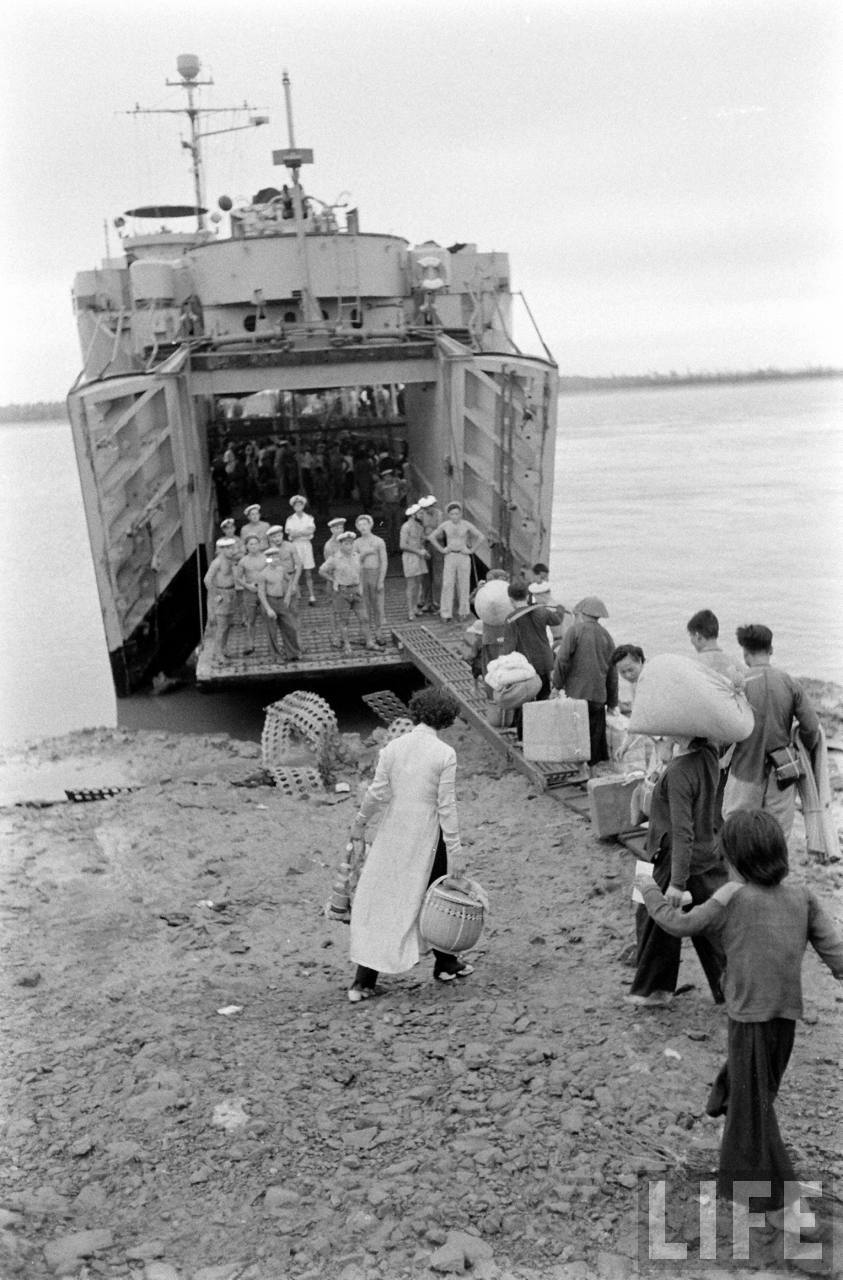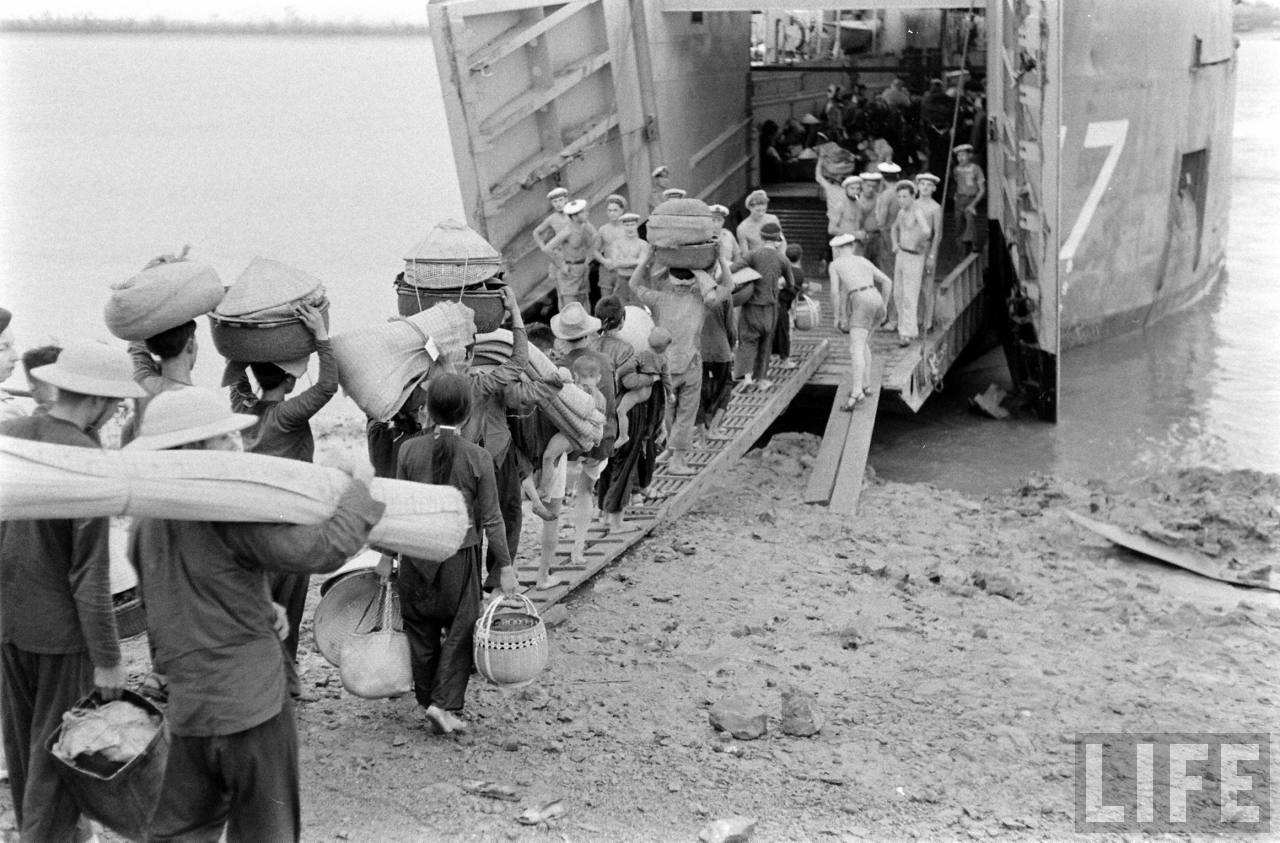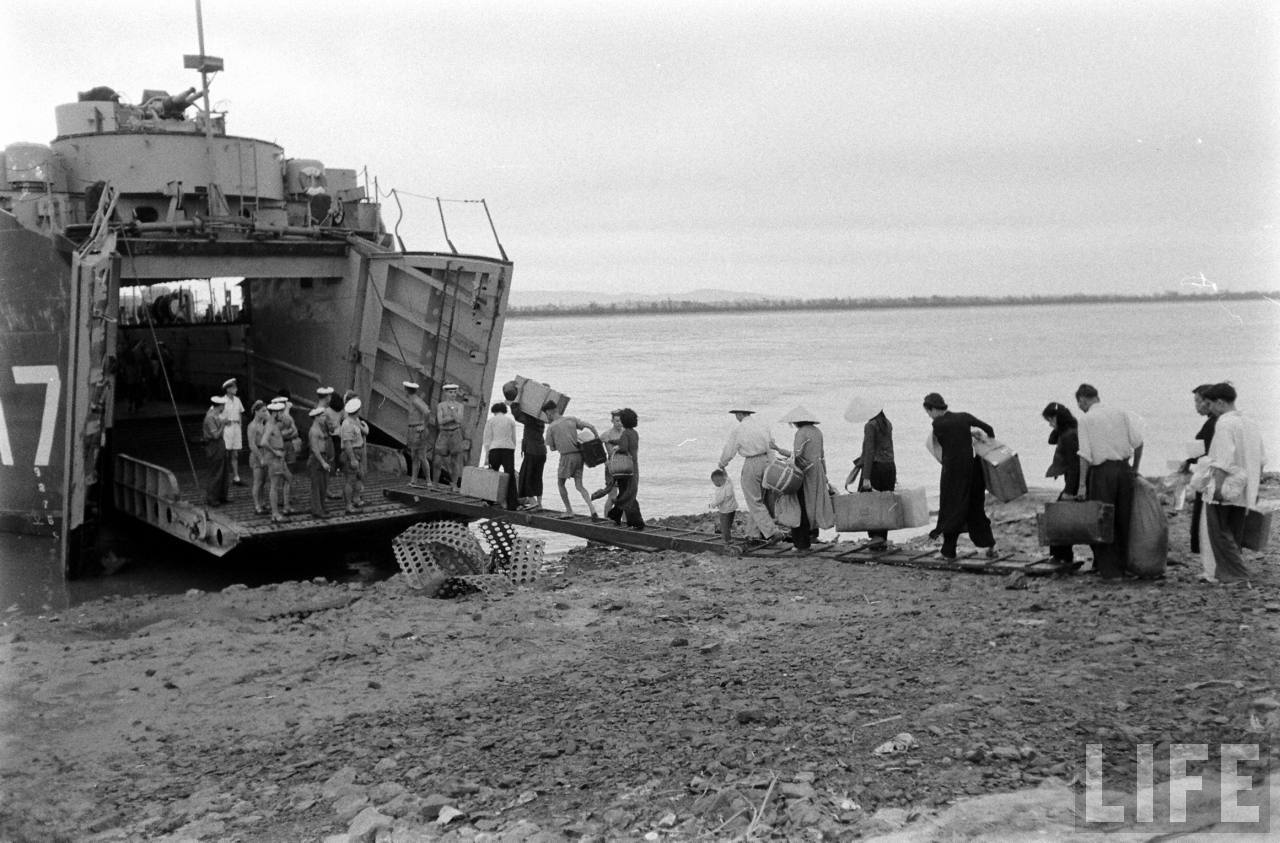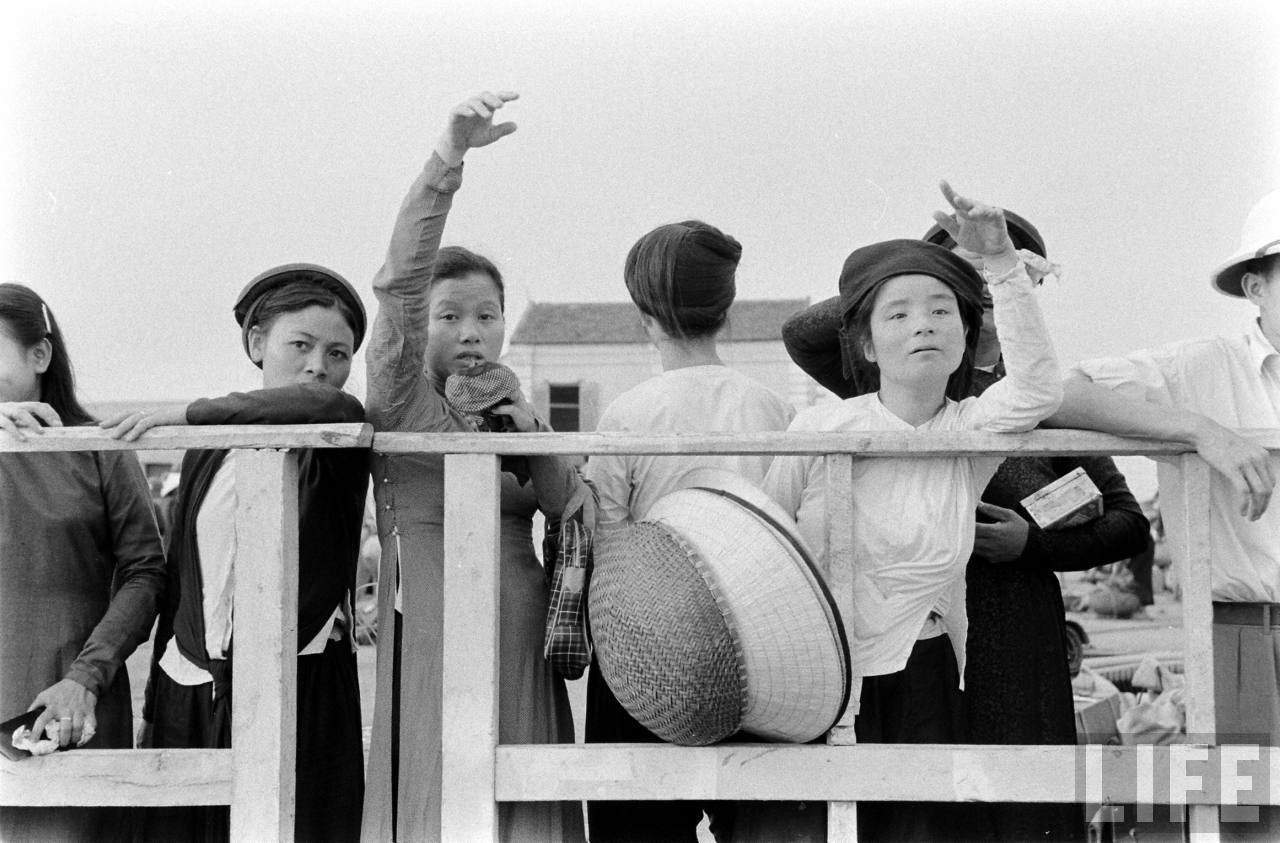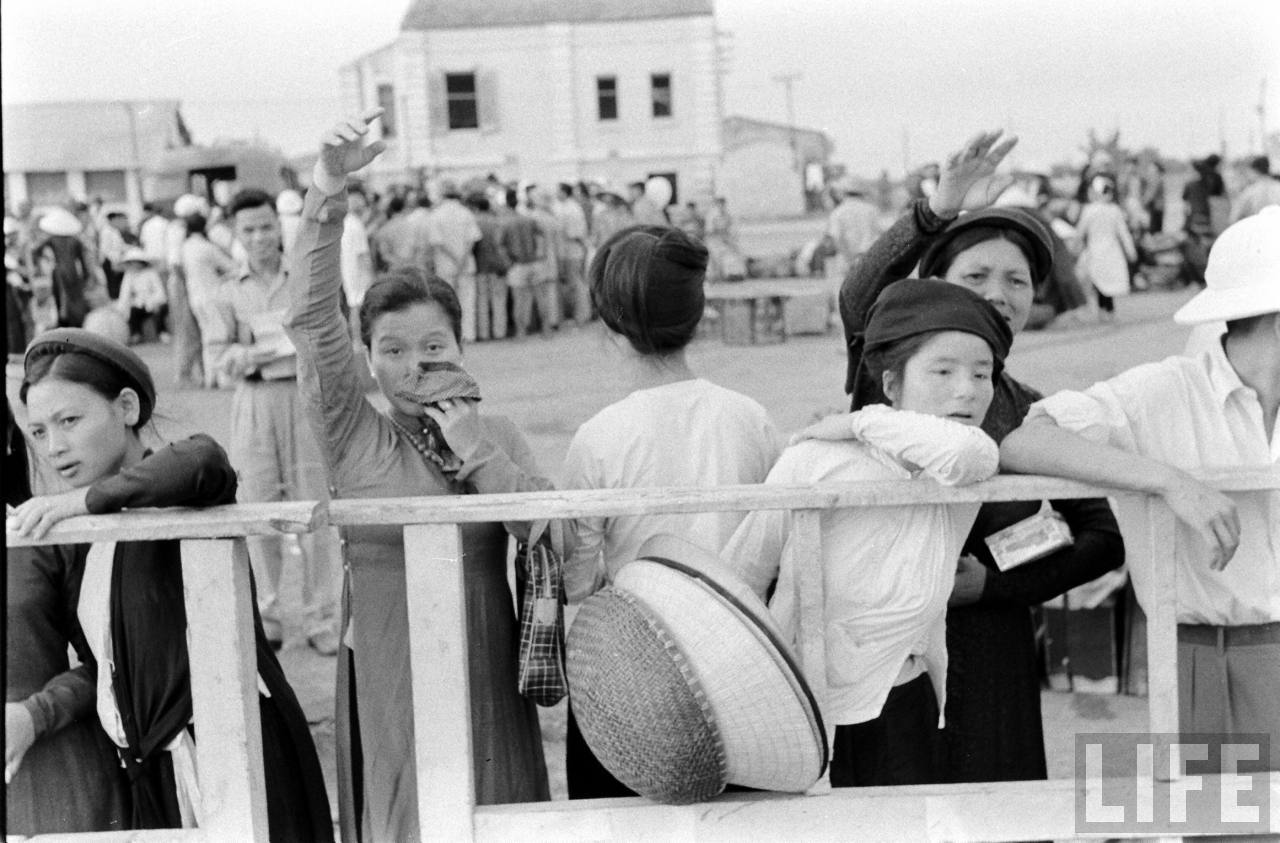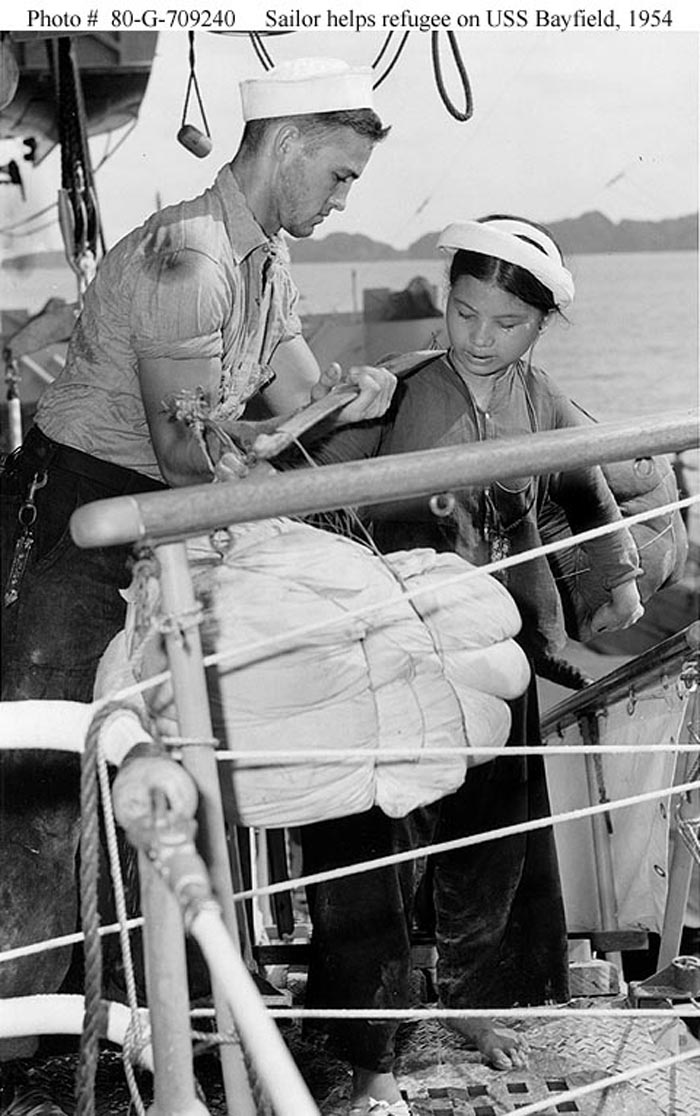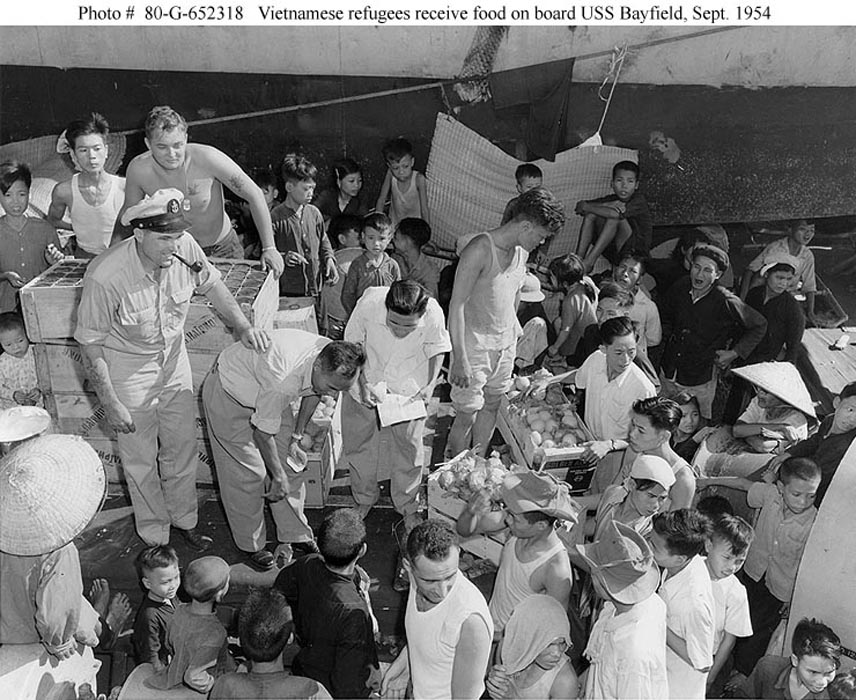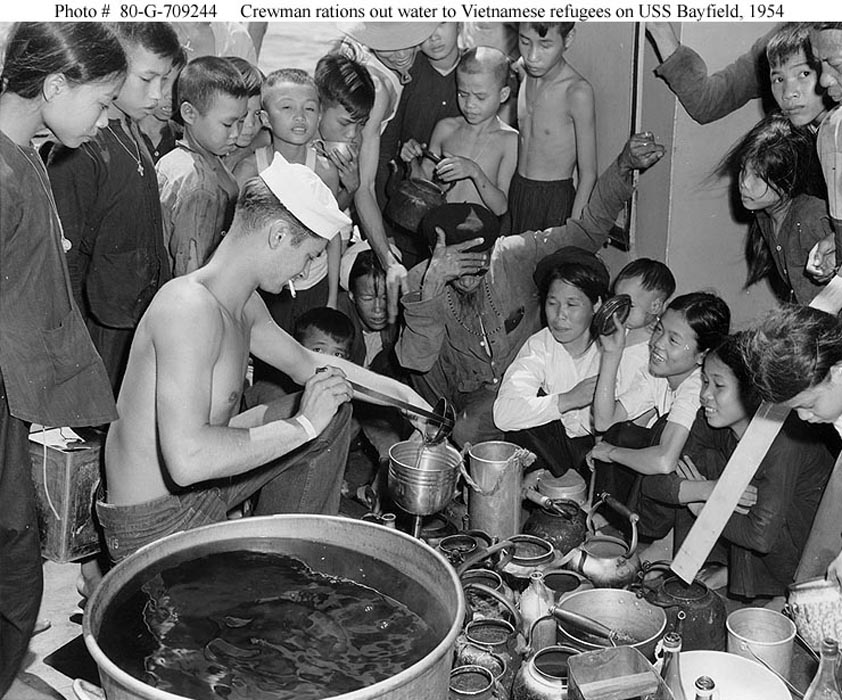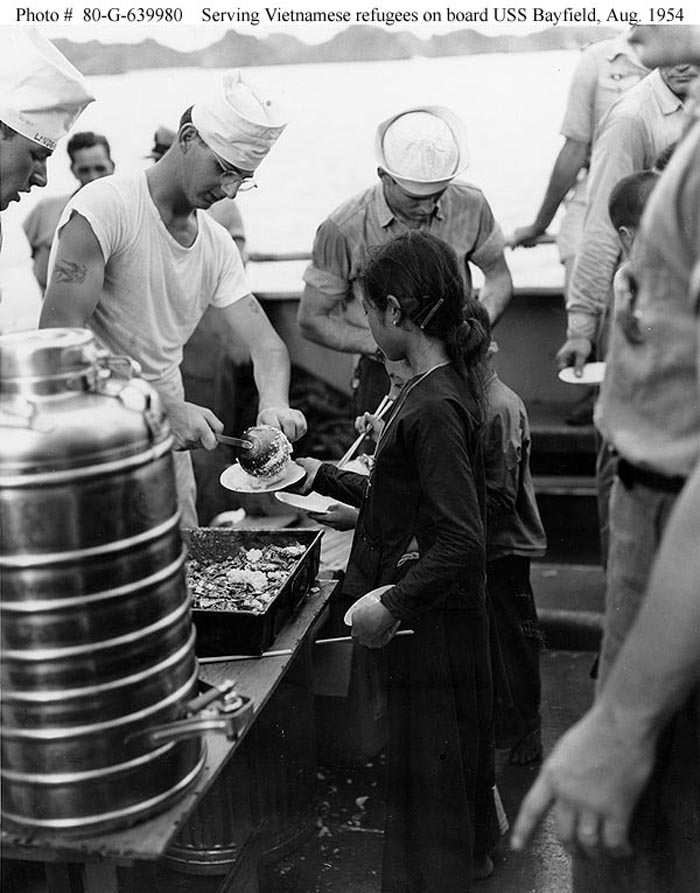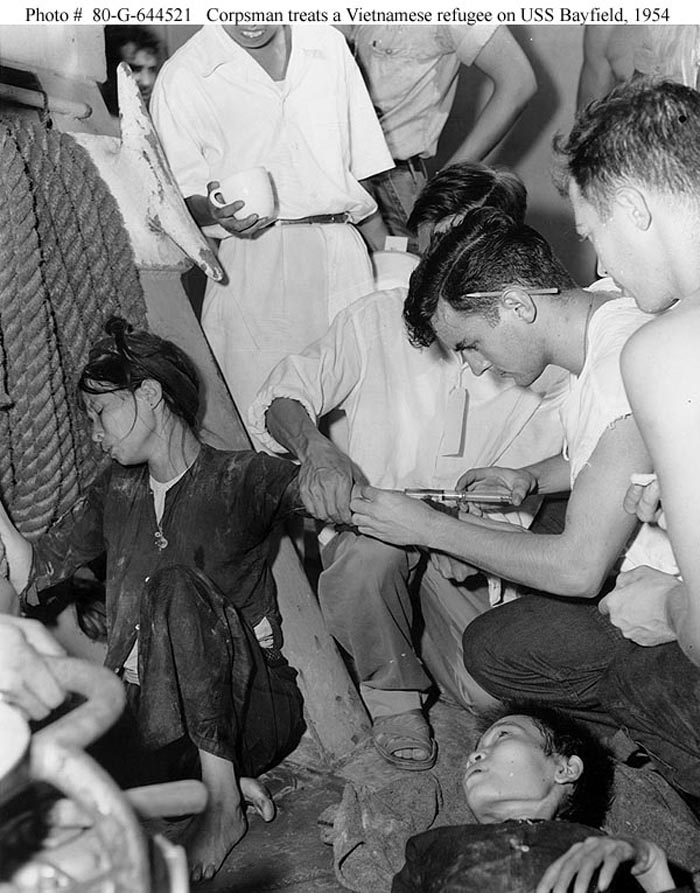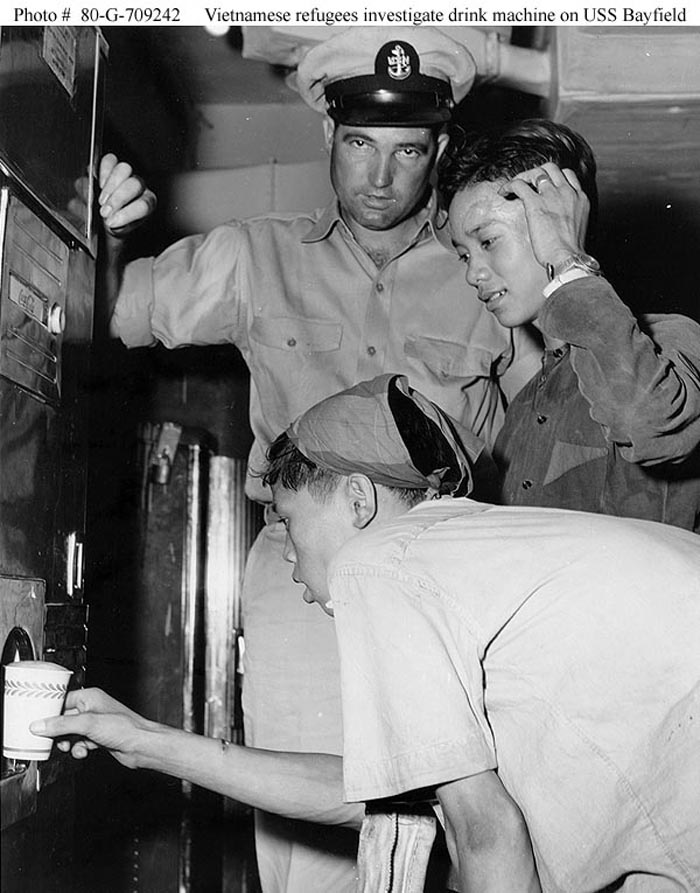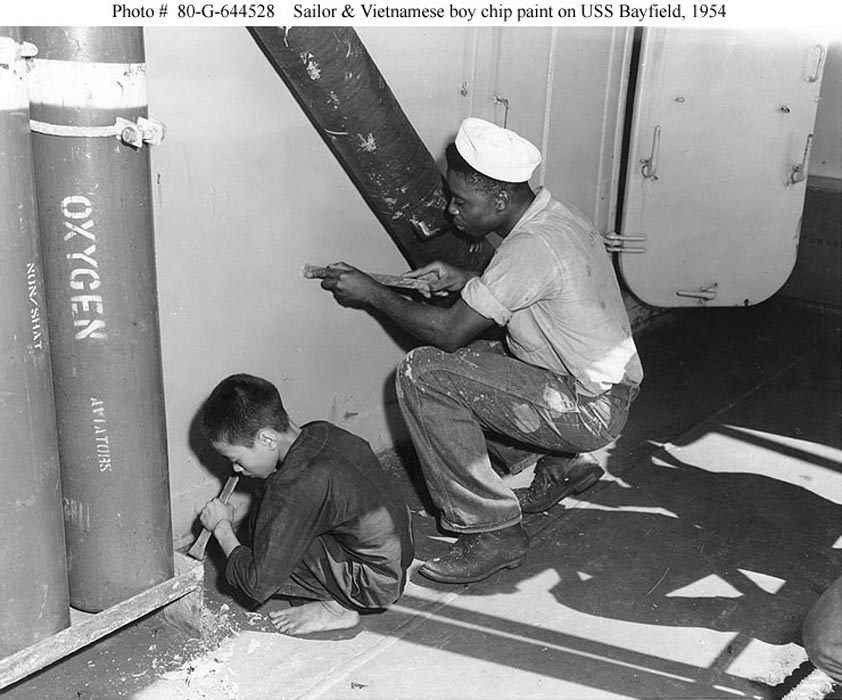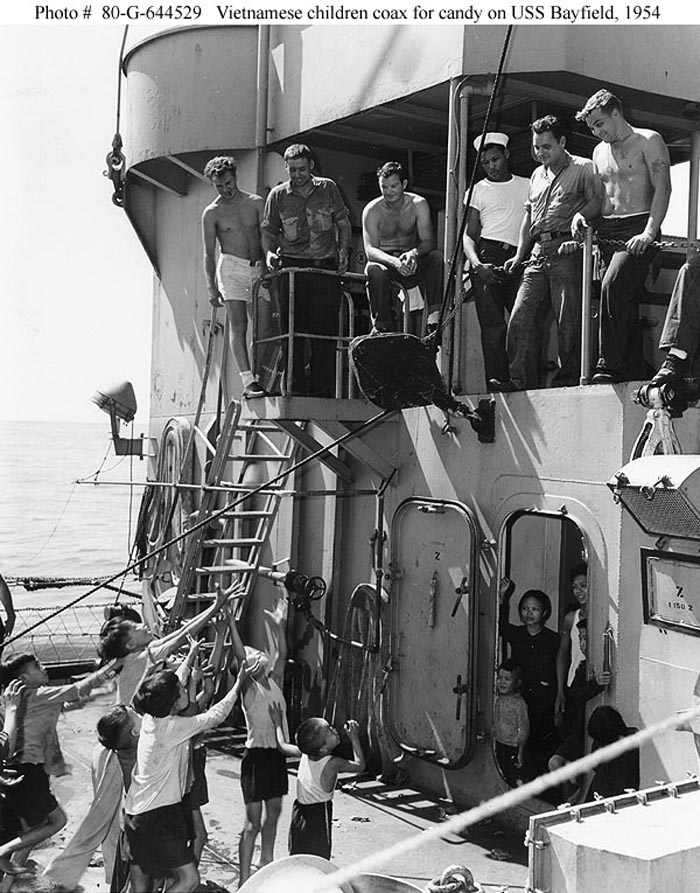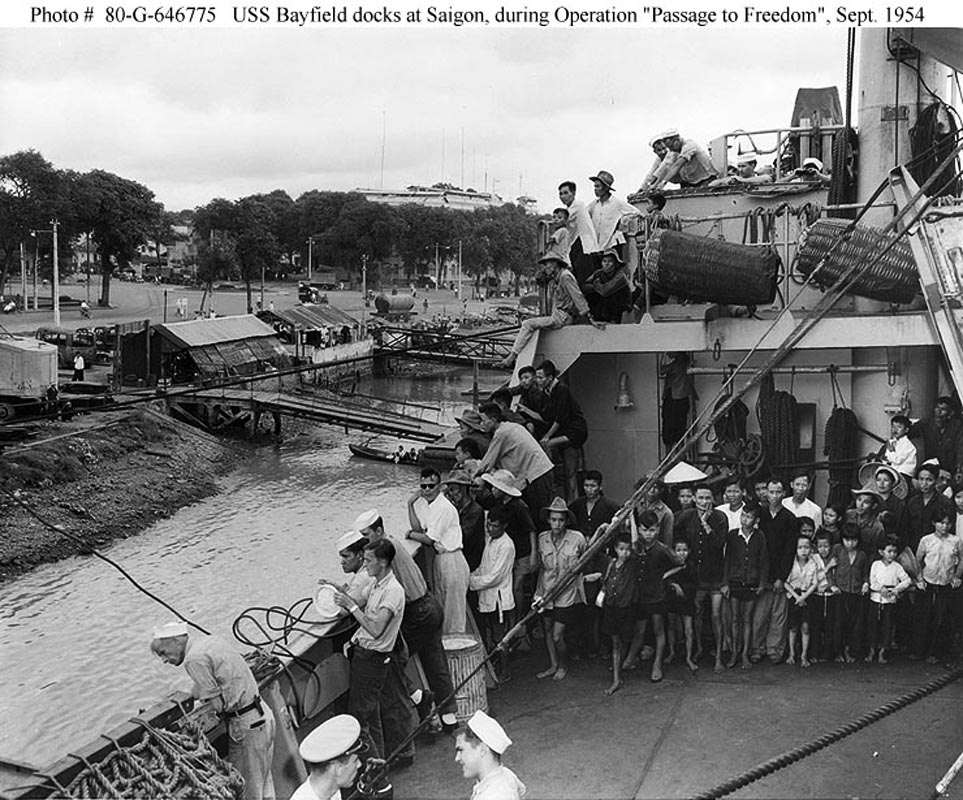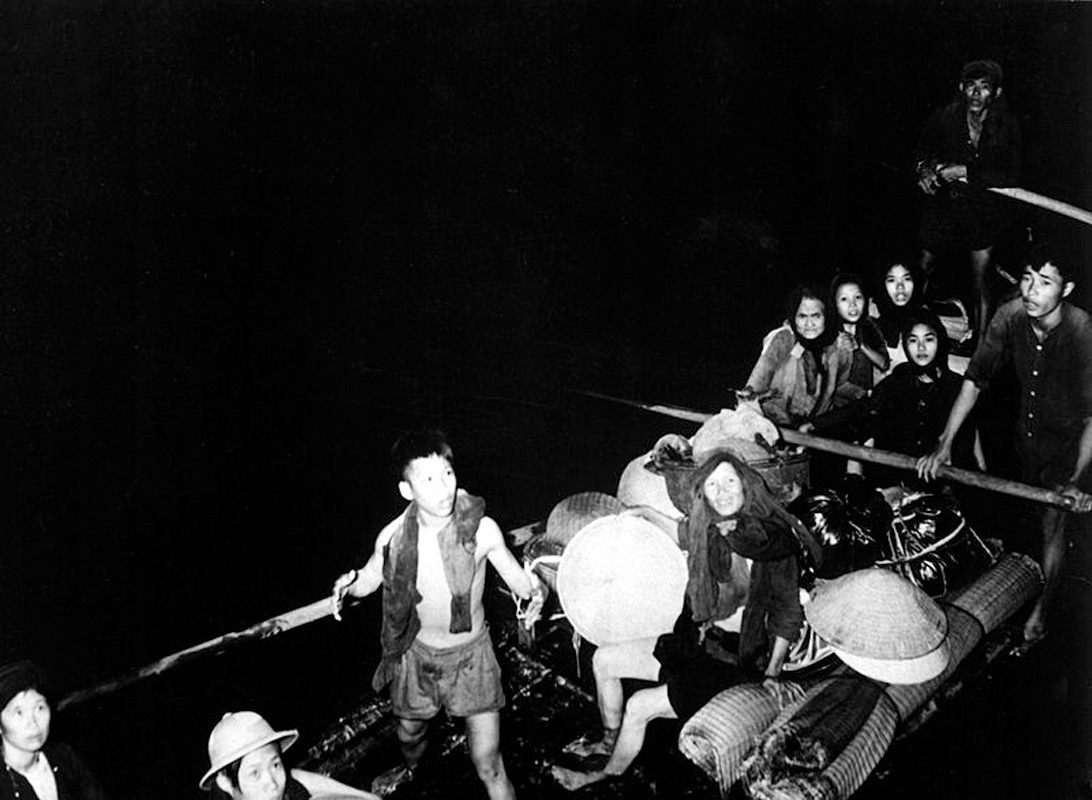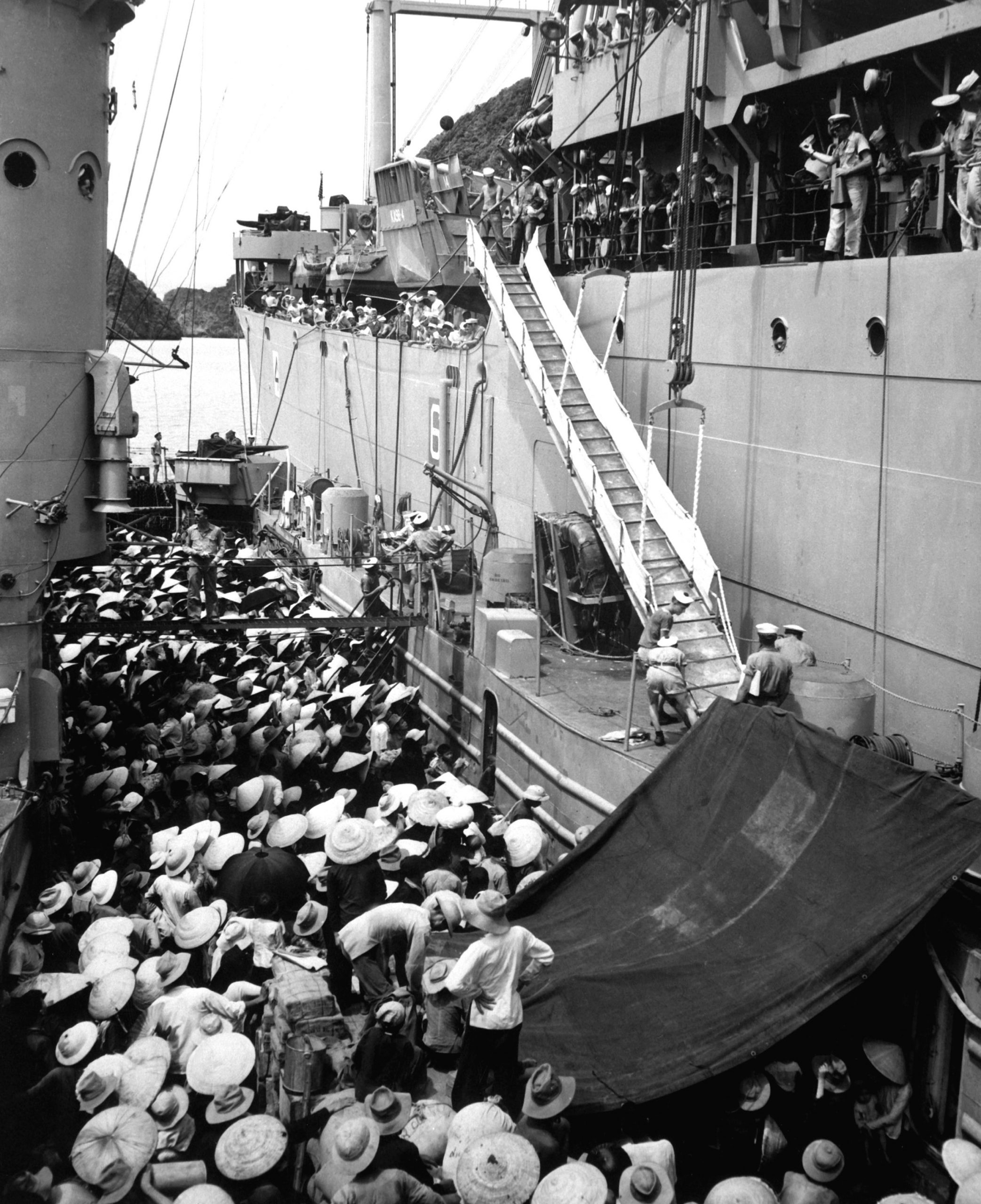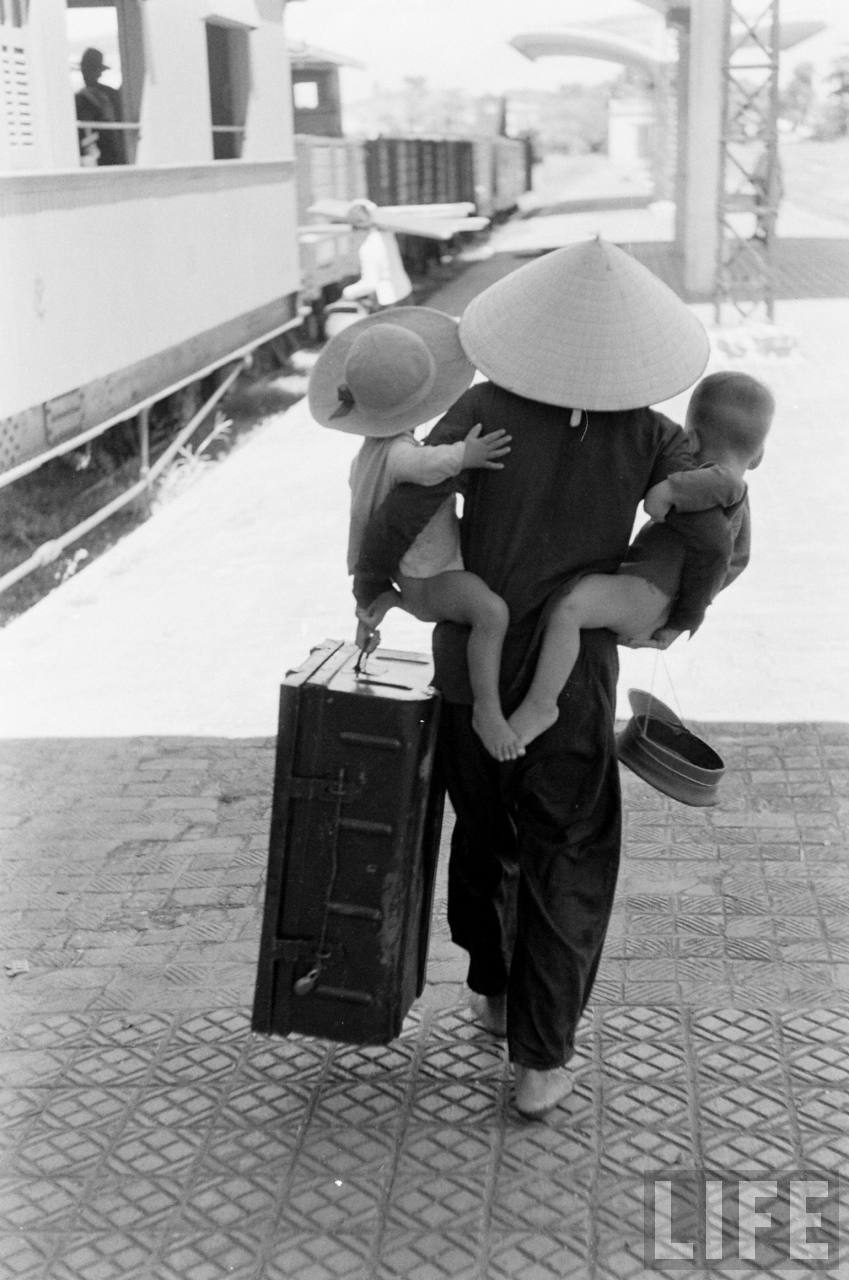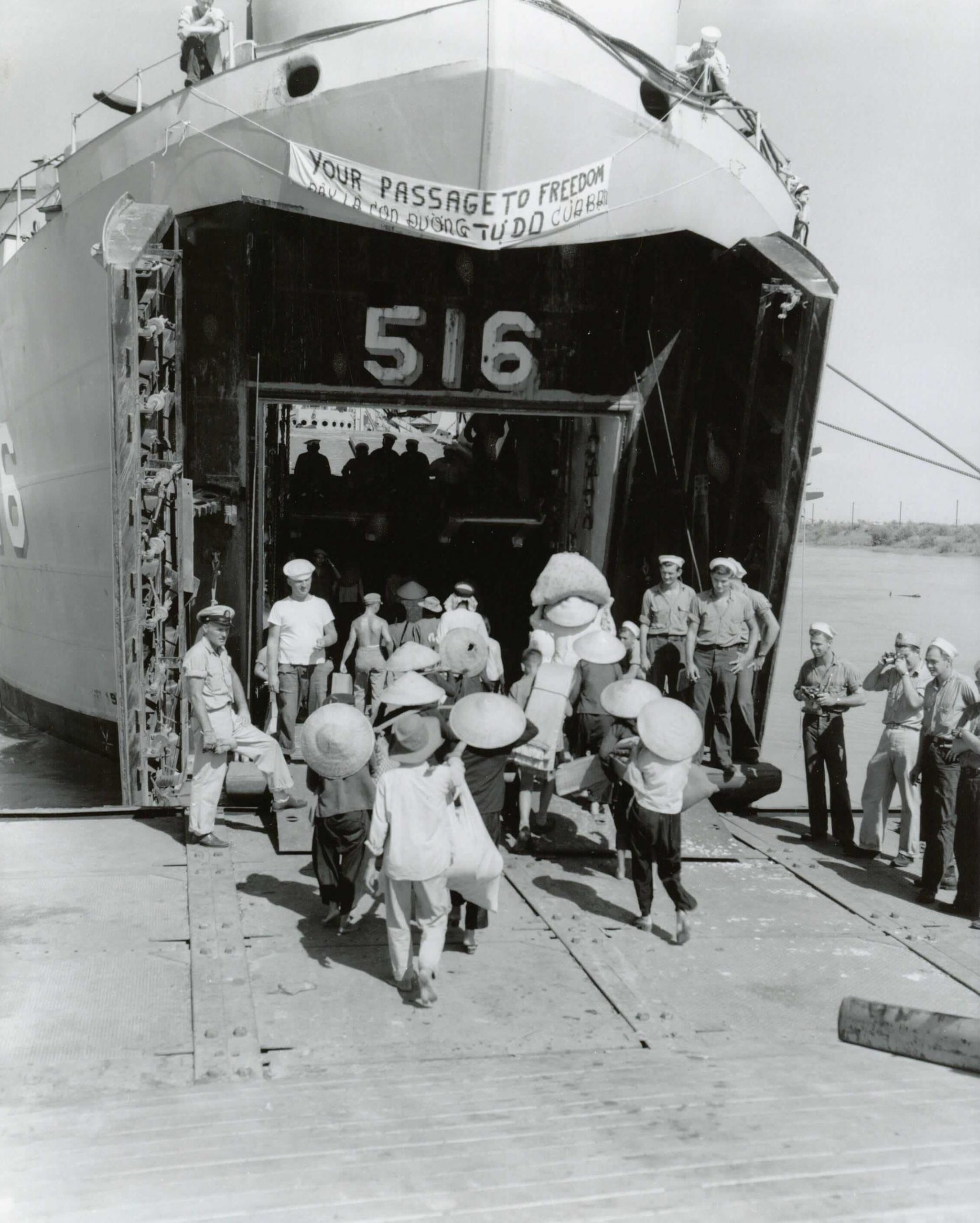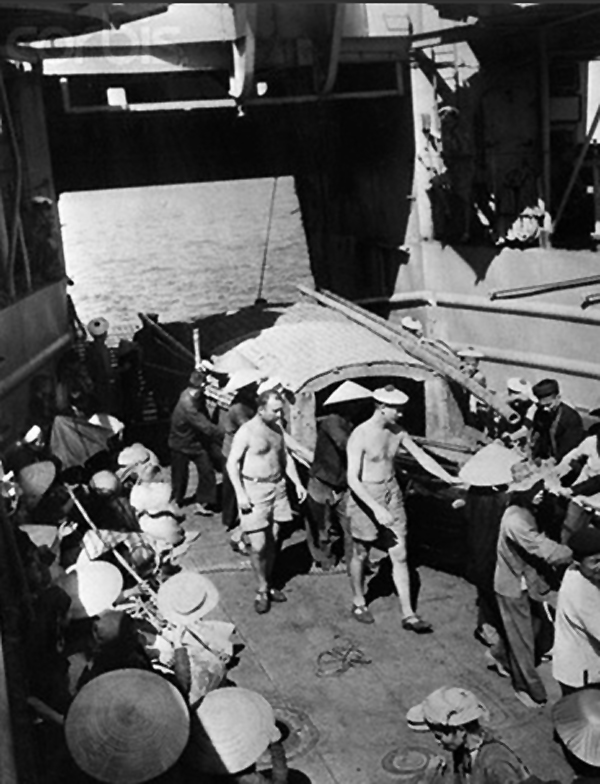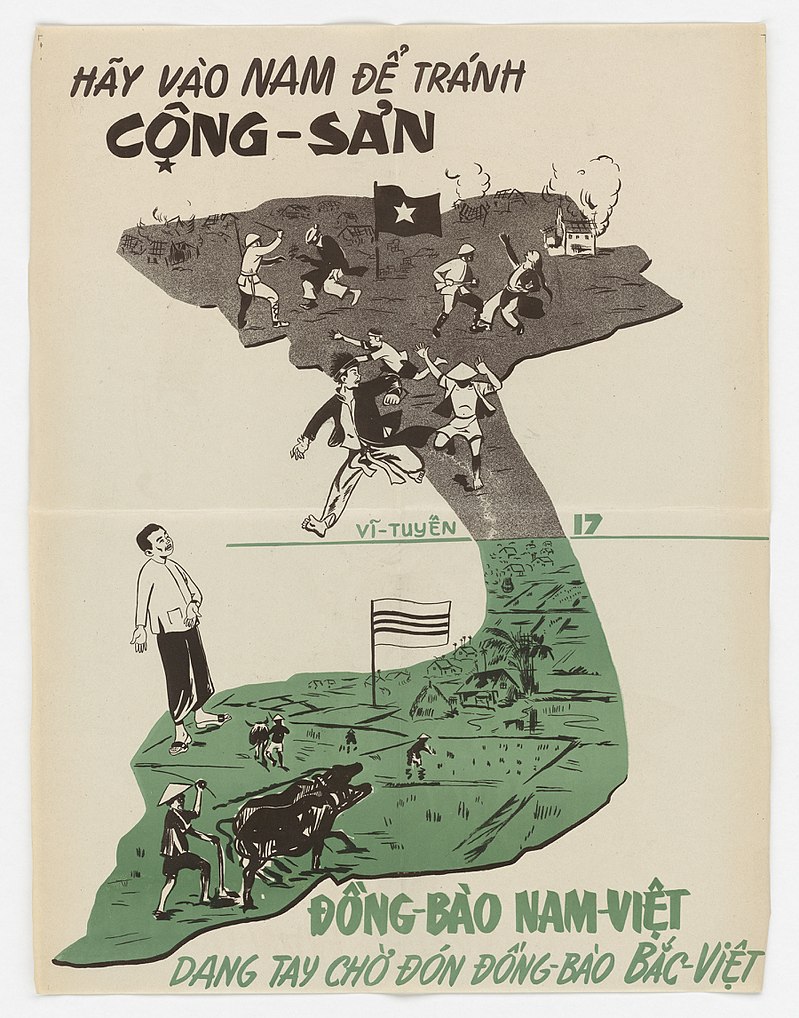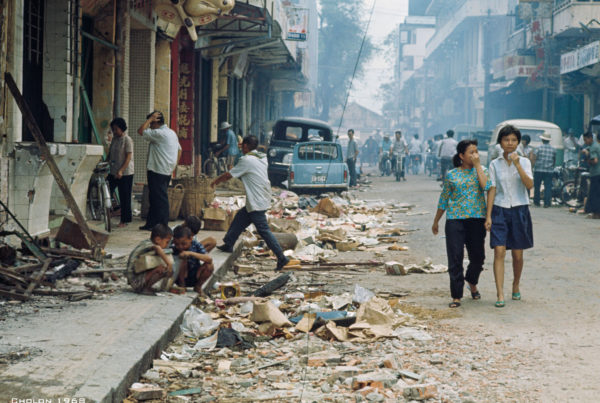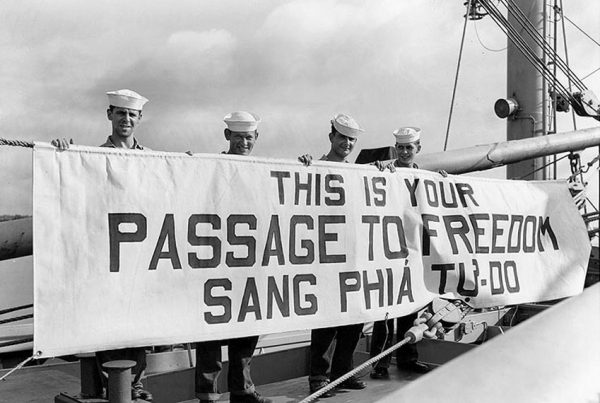Operation Passage to Freedom was a term used by the United States Navy to describe the propaganda effort and the assistance in transporting in 310,000 Vietnamese civilians, soldiers and non-Vietnamese members of the French Army from communist North Vietnam (the Democratic Republic of Vietnam) to monarchist South Vietnam (the State of Vietnam, later to become the Republic of Vietnam) between the years 1954 and 1955. The French and other countries may have transported a further 500,000. In the wake of the French defeat at the Battle of Dien Bien Phu, the Geneva Accords of 1954 decided the fate of French Indochina after eight years of war between the colonial French Union forces and the Viet Minh, which fought for Vietnamese independence. The accords resulted in the partition of Vietnam at the 17th parallel north, with Ho Chi Minh’s communist Viet Minh in control of the north and the French-backed State of Vietnam in the south. The agreements allowed a 300-day period of grace, ending on May 18, 1955, in which people could move freely between the two Vietnams before the border was sealed. The partition was intended to be temporary, pending elections in 1956 to reunify the country under a national government. Between 600,000 and one million people moved south, including more than 200,000 French citizens and soldiers in the French army while between 14,000 – 45,000 civilians and approximately 100,000 Viet Minh fighters moved in the opposite direction.
The mass migration of northerners was facilitated primarily by the French Air Force and Navy. American naval vessels supplemented the French in evacuating northerners to Saigon, the southern capital. The operation was accompanied by a large humanitarian relief effort, bankrolled mainly by the United States government in an attempt to absorb a large tent city of refugees that had sprung up outside Saigon. For the US, the migration was a public relations coup, generating wide coverage of the flight of Vietnamese from the perceived oppression of communism to the “free world” in the south. The period was marked by a Central Intelligence Agency-backed propaganda campaign on behalf of South Vietnam’s Roman Catholic Prime Minister Ngo Dinh Diem. The campaign exhorted Catholics to flee “impending religious persecution” under communism, and around 60% of the north’s one million Catholics obliged.
The migration boosted the Catholic power base of Diem; whereas the majority of Vietnam’s Catholics previously lived in the north, now most were in the south. Fearing a communist victory, Diem cancelled the elections. Believing the northern Catholics to be a bastion of solid anti-communist support, Diem proceeded to treat his new constituents as a special interest group. In the long run, the northern Catholics never fully integrated into southern society and Diem’s favoritism toward them caused tension that culminated in the Buddhist crisis of 1963, which ended with the downfall and assassination of the South Vietnamese leader.
Source: Wikipedia.

